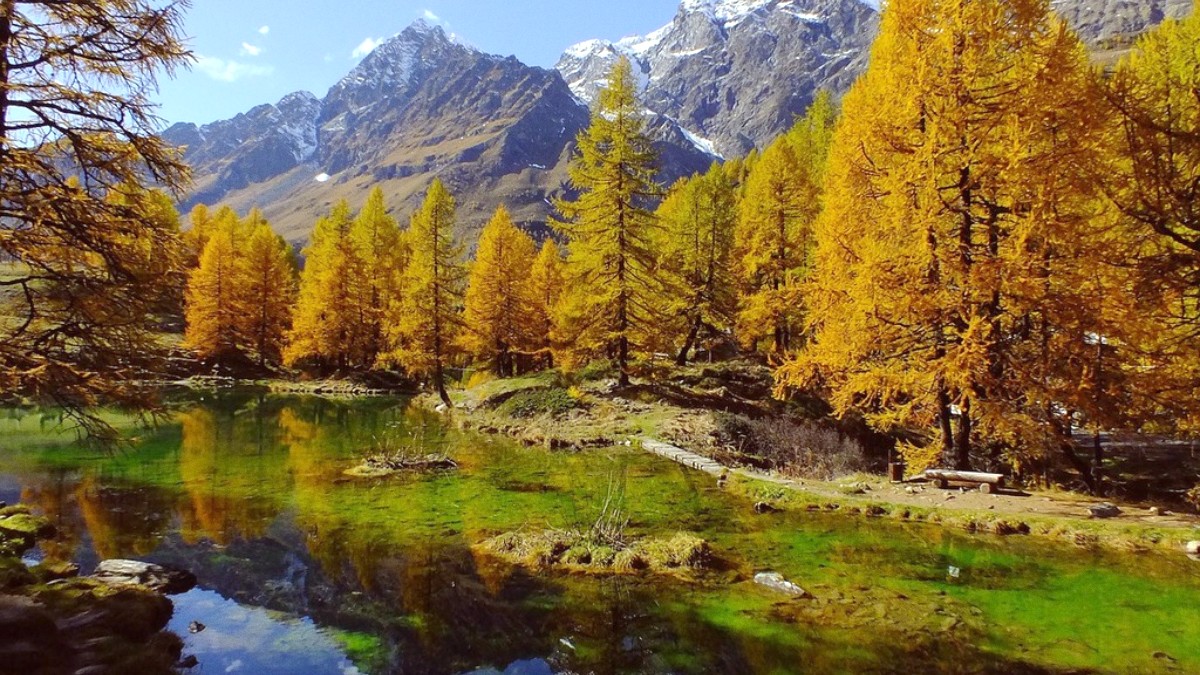
Liguria Piedmont And Valle Daosta, Italy
Turin Airport (Torino Caselle Airport - Sandro Pertini): (TRN) Approximately 115 km (71 miles) from Aosta, Turin Airport serves as the closest major international airport to the Aosta Valley. It supports a range of European destinations.
Milan Malpensa Airport: (MXP) Situated about 170 km (105 miles) from Aosta, Milan Malpensa is a large international hub with extensive connections worldwide. It is a common choice for travelers from outside Europe. Geneva Airport: (GVA) This major international hub in Switzerland stands approximately 100 km (62 miles) from Aosta, reachable via the Mont Blanc Tunnel. Despite being in another country, its proximity often makes it a convenient option for accessing the Aosta Valley, though it does include an international border crossing.
Flight prices peak during peak summer (July-August) and winter ski season (December-March). Booking well in advance is a good idea.
Shoulder seasons (April-May and September-October) generally present better value, with more competitive prices and fewer crowds. Skyscanner is a tool for price comparisons.
All major airports (Turin, Milan Malpensa, Geneva) furnish standard facilities: car rental, duty-free, dining, currency exchange, lounges, and public transport connections. Aosta Airport (AOT) has limited services.
Italy-Switzerland (Grand St Bernard Pass/Tunnel) and Italy-France (Mont Blanc Tunnel/Little St Bernard Pass). General Schengen procedures apply; non-EU citizens might face passport checks. Mont Blanc Tunnel carries a substantial toll fee.
Aosta connects by regional trains to Turin (Torino Porta Nuova), typically around 2 hours with a change at Chivasso. FlixBus and Autostradale furnish bus services to Aosta from major Italian cities, often a cost-effective and direct alternative to trains.
Renting a car presents flexibility. Roads are generally well-maintained. An International Driving Permit (IDP) may be needed. Motorways have tolls. Winter driving from November 15 to April 15 mandates snow tires or chains in designated areas.
Sea or river arrivals do not apply for Aosta.
Travelers reach Aosta mainly via air, road, or rail. Its location makes it accessible through major airports like Turin, Milan Malpensa, and Geneva, followed by bus or car transfers. Train connections from Turin also present a viable option.
The geological formation of the Alps means Aosta and its valley are entirely landlocked. There are no large bodies of water or major rivers that would accommodate sea or river transportation for passenger arrivals. The region's transport network focuses on overcoming mountainous terrain.
Instead of water-based transport, the Aosta Valley offers sophisticated mountain transport systems. Cable cars, gondolas, and chairlifts frequently connect towns to high-altitude ski resorts and hiking areas, providing useful mobility and scenic access within the Alpine environment.
No specific exit fees or taxes apply for departing Italy as a tourist. Your airline ticket typically includes any relevant airport taxes.
The major airports (TRN, MXP, GVA) present standard facilities for departing travelers, including check-in counters, baggage drop-off, security checkpoints, duty-free shopping, restaurants, and lounges. Aosta's train and bus stations furnish basic facilities, including ticket offices, waiting areas, and often small cafes.
Ensure all travel documents are ready and accessible.
Recheck any specific country entry rules if flying beyond Italy/Schengen.
Confirm airline baggage allowances to avoid last-minute fees.
Gather all passports, tickets, and necessary travel documents. Confirm transportation to the airport or station. Return any rental equipment or vehicles. Settle outstanding bills. Check for forgotten items in your accommodation. Depart with wonderful memories of Aosta Valley.